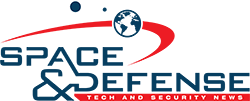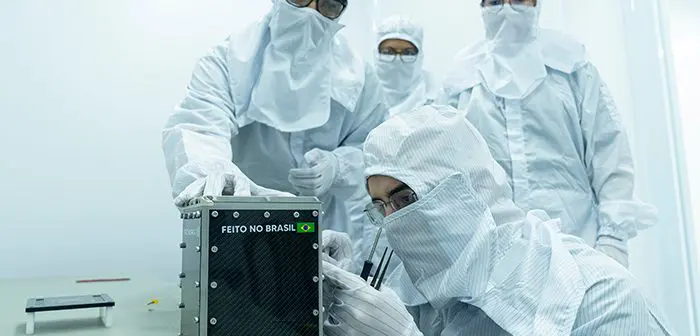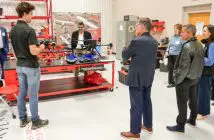
INNOSPACE has begun payload integration procedures for its first commercial launch mission, SPACEWARD, involving the HANBIT-Nano launch vehicle. The company announced that it is conducting functional checks and interface tests between customer satellites, experimental payloads, and the launch vehicle — a key milestone in South Korea’s emerging private space industry.
The process involves verifying both electrical and mechanical connections between the payload adapter and the satellites or payloads. These tests are an essential step in ensuring that all systems are properly connected and can operate together once in orbit.
The HANBIT-Nano is scheduled to launch on November 23, 2025, at 5:00 AM AEDT from the Alcântara Space Center in Brazil, within a launch window that runs from October 29 to November 29 AEDT. The mission will deploy five customer satellites into low Earth orbit at 300 kilometres altitude and 40° inclination, alongside three non-separating experimental payloads and one symbolic branding payload.
The integration campaign includes participation from multiple international partners. On-site functional checks and interface testing were conducted by three Brazilian customers — the Federal University of Maranhão (UFMA), the Brazilian Space Agency (AEB), and Castro Leite Consultoria (CLC). UFMA tested two small satellites for technology and education; AEB completed checks for two small satellites and one inertial navigation unit; and CLC tested one GNSS unit and one INS payload.
An additional satellite from Indian company Grahaa SPACE is scheduled to join the integration sequence. A symbolic payload — an aluminium “highball-can” model from Korean company BREWGURU — will also be included as part of the mission.
INNOSPACE founder and CEO Soojong Kim said the tests mark a significant milestone for Korea’s private launch sector, representing the first time a Korean private company has independently carried out commercial satellite–launch vehicle integration procedures.
Following the current phase of functional and interface checks, INNOSPACE will move to final integration, which includes mounting the satellites, installing the payload fairing, conducting pre-launch rehearsals, and completing weather, environmental, and flight-safety assessments in coordination with the Brazilian Air Force ahead of the final countdown.
The SPACEWARD mission represents Korea’s first fully private-sector commercial launch operation, signalling a transition from test flights to genuine service readiness in the country’s growing launch services industry.





